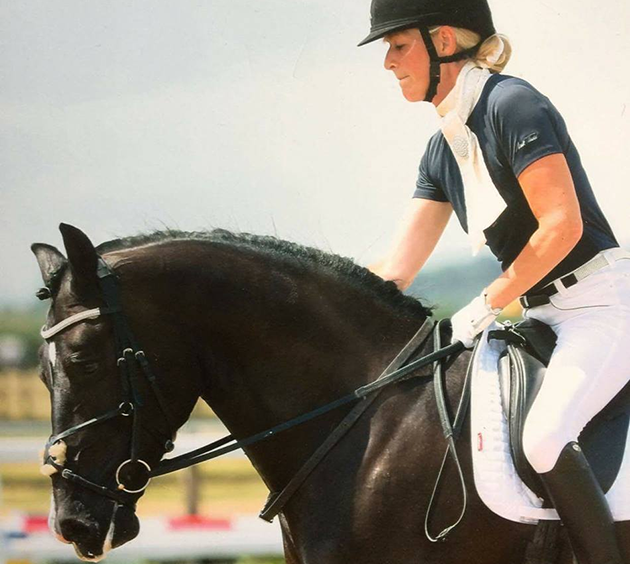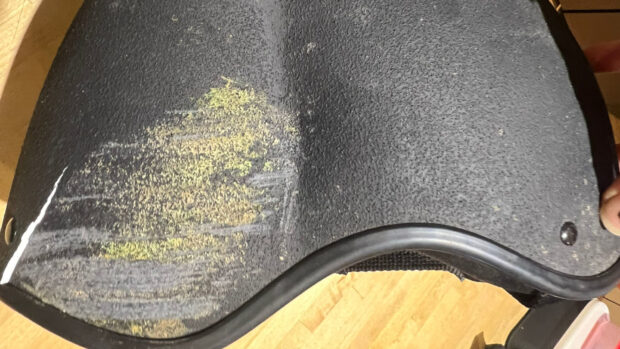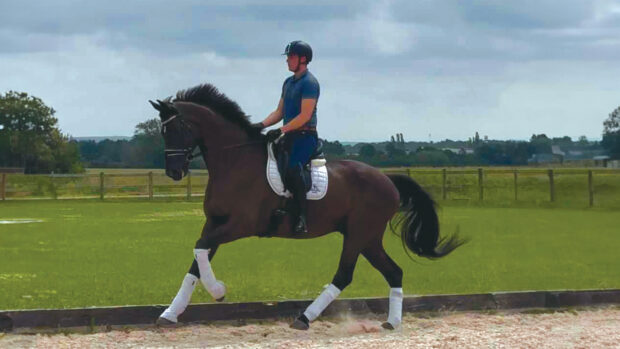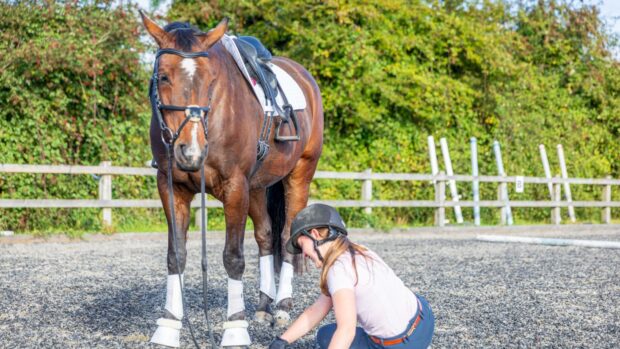Whether you’re a professional rider or a weekend hacker, confidence issues can affect us all. H&H speaks to a therapist and one rider who has successfully regained her nerve
Whether you’re a professional rider or a weekend hacker, confidence issues affect us all. Maybe you get butterflies the first time you canter after a fall, or you need a few extra lessons with an instructor to build yourself up again. But what happens when the ‘get up and get on with it’ attitude doesn’t work? Or if losing your confidence forces you to stop riding and give up horses altogether?
Therapist Diane Danzebrink has seen it all before.
“When I know there’s a way to deal with confidence loss, the saddest thing is hearing of riders who have given up — given up something that gave them deep, deep joy — because they’ve had an accident and not been able to get over it,” she says.
We meet experienced horsewoman Nina Quinn (pictured, below) and find out how Diane helped her after a traumatic accident.

The accident: ‘the next thing I knew, he was going berserk’
When Nina turned up at the yard to see her warmblood performing acrobatics in his stable, she made the wise decision not to ride. Instead, her yard owner offered her one of his safe, sane youngsters.
“I got on and the next thing I knew, he was going berserk — rearing, bucking and bronking,” says Nina.
“People were shouting to get off, so I jumped. As I did, he spun around and kicked me directly in the knee.” Nina ended up with a broken lower leg and a knee shattered into pieces.
Before the accident, Nina was competing at BE90 and BE100 level eventing, with years of experience backing and riding young horses.
“I was always the one to get on tricky horses, and I had always been confident. I rode my older horse after my accident and felt absolutely fine.
“But when I went to get on my other horse, I realised something was wrong. I was very aware that I was getting on him. I couldn’t stop thinking that he was going to do something and that it would come out of nowhere — like it did with the horse in my accident.”
Nina’s anxiety escalated, and soon she could only ride when her friend and yard owner, Alison, were on hand to help her.
“Before, if a horse ever spooked or misbehaved, I would simply carry on. But after my accident, it was always at the back of my mind — what if he spooked? What if he did something naughty? I couldn’t relax.”
Understanding our memories
Diane explains that many people think this loss of confidence is untreatable, or that it has to be done over years of therapy. But experts know that if work is done in the right way, people can regain their confidence incredibly quickly.
“In everyday life, our memories are filed away in a ‘cabinet’ in our brain. If we want to recall them, we can,” explains Diane.
“If asked, you can dig into that cabinet and bring back information. But any traumatic memory that comes back to you automatically, without you recalling it, for over 30 days is classified as PTSD (post-traumatic stress disorder). That memory never goes back into the cabinet. The brain has decided there’s danger attached to it, so keeps it current.
“For Nina, the danger was attached to getting on a horse. Every time she got on, that memory came back to her — even though she wasn’t recalling it.”
The rewind technique
Nina went to Diane for three sessions, where Diane used the rewind technique on her. This would help Nina file the memory away properly, ensuring she could recall it when wanted, without the risk of it coming back spontaneously.
The rewind technique is a safe, effective way to help someone overcome a traumatic event. While in a state of deep relaxation, you take a traumatic memory and store it as an ordinary one. Doing this stops the memory from coming back as distressing, unwanted flashbacks. Instead, you can recall it when you want, leaving it as an unpleasant, yet non-threatening memory.
“The great thing about the rewind technique is that you don’t have to get all the details about someone’s trauma. If someone has to constantly tell and re-tell everything that happened, there’s a risk of re-traumatising them, as they’re having to repeatedly relive it,” explains Diane.
“The work we do is called guided visualisation. I started by relaxing Nina using breathing techniques. In her imagination, I asked her to run the film of what happened on that day. Then, I told her to rewind that film very fast, back to a really positive memory she has of riding.”
Diane was getting Nina to trick her brain into filing the traumatic memory away.
“If you imagine there’s a part of the brain that acts like passport control (the amygdala), normal memories are swiped through. But when a traumatic memory comes to passport control, it’s stopped and has to go back. What I’m helping people do is process the memory as it should have been, to get it through passport control and filed into the cabinet (the neocortex).”
“I came out after the first session and thought there was no point to it,” says Nina. “I felt no different.” But after the second session, Nina had a breakthrough. In her mind, she had mounted a quiet horse and then out of the blue, it had gone berserk. “All of a sudden it became clear why the accident happened. It didn’t come out of nowhere. When my friend did the girth up, she caught him and he reacted.”
Returning to normality
The next big step came when Nina mounted her horse without assistance — and without realising.
“I was talking to a friend before mounting, and the next thing I knew, I was on my horse.”
Usually Nina had to make sure there was nothing around that could spook him. But this time, she’d not given it any thought.
From that day on, Nina’s confidence continued to soar — and it only took three sessions. When Diane works with horse riders, she has two clinical sessions and a third session on horseback. Now, Nina is back out competing at an affiliated level, with her confidence levels fully restored.
“The great thing was hearing from Nina a few weeks later. She’d gone out competing for the first time in ages and was placed second,” says Diane.
Don’t suffer in silence
Both Diane and Nina stress the importance of getting help. Despite all the work being done to raise awareness of mental health issues, Diane believes there’s still stigma and fear around asking for help.
Continued below…
Like this? You might also enjoy reading these:
How sports psychology helped an eventer overcome her rotational fall demons
Subscribe to Horse & Hound magazine today – and enjoy unlimited website access all year round
Diane explains: “People I treat say they’ve got a block and they can’t get past it: they don’t know what’s happening to them. But if I can explain what’s going on in their brain, then people understand the mechanics and can start to recover. They see that their memory got stuck, that they need to move it, and then they can ride again.”
“It’s a horrible feeling to be on edge all the time. I wish more people would do something about their nerves and seek professional help,” says Nina, though she admits it’s not easy. “I did feel shame admitting that my confidence had gone, but admitting it must be the first step. The sessions with Di were invaluable; they were the best thing I’ve ever done. I’m now finally enjoying my horse again.”
For more information on using the rewind technique to regain your confidence, you can speak to Diane on dianedanzebrink@gmail.com or 07711142241.
Horse & Hound magazine, out every Thursday, is packed with all the latest news and reports, as well as interviews, specials, nostalgia, vet and training advice. Find how you can enjoy the magazine delivered to your door every week, plus options to upgrade to access our H&H Plus online service which brings you breaking news as it happens as well as other benefits.



